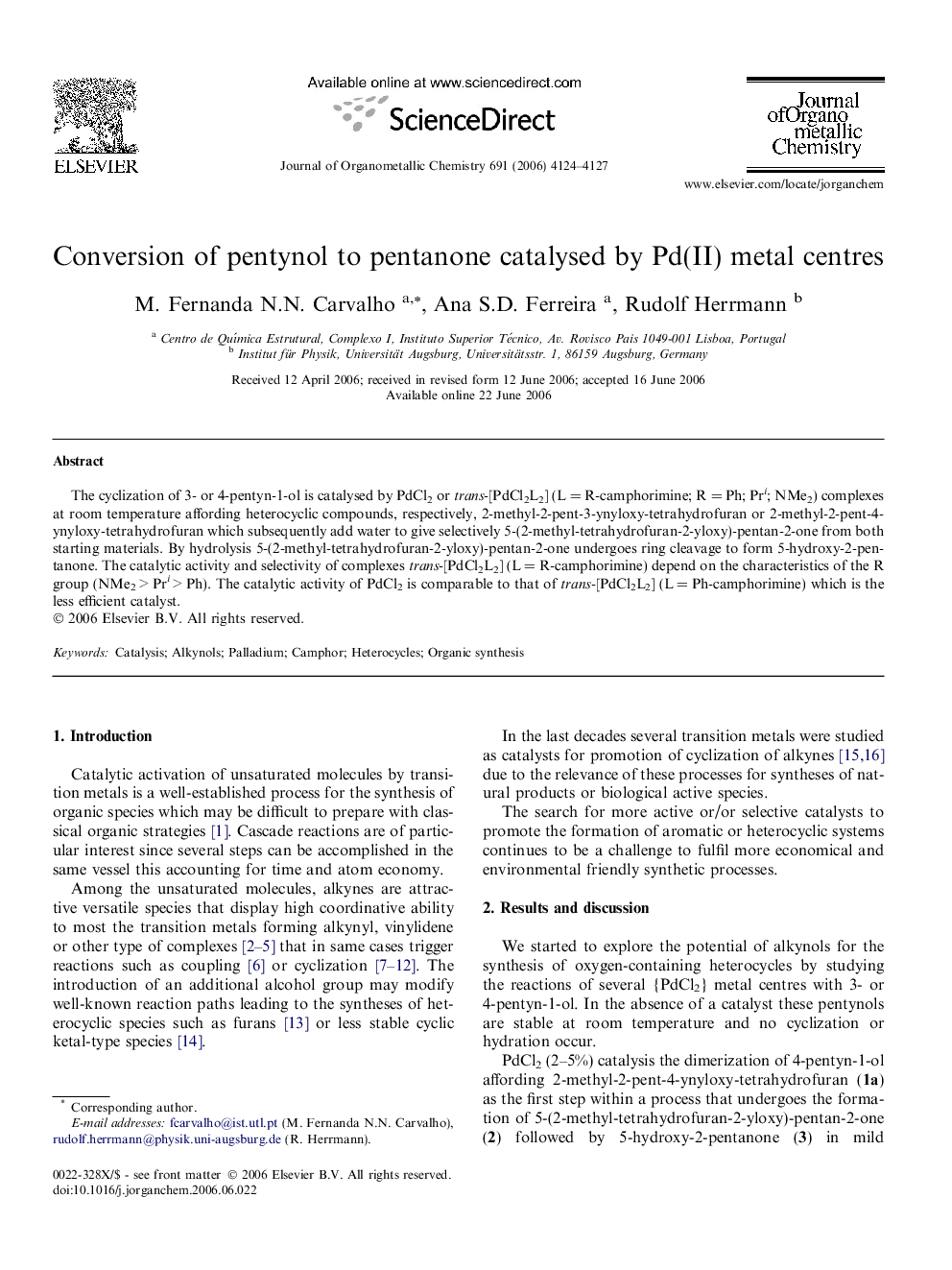| Article ID | Journal | Published Year | Pages | File Type |
|---|---|---|---|---|
| 1325711 | Journal of Organometallic Chemistry | 2006 | 4 Pages |
The cyclization of 3- or 4-pentyn-1-ol is catalysed by PdCl2 or trans-[PdCl2L2] (L = R-camphorimine; R = Ph; Pri; NMe2) complexes at room temperature affording heterocyclic compounds, respectively, 2-methyl-2-pent-3-ynyloxy-tetrahydrofuran or 2-methyl-2-pent-4-ynyloxy-tetrahydrofuran which subsequently add water to give selectively 5-(2-methyl-tetrahydrofuran-2-yloxy)-pentan-2-one from both starting materials. By hydrolysis 5-(2-methyl-tetrahydrofuran-2-yloxy)-pentan-2-one undergoes ring cleavage to form 5-hydroxy-2-pentanone. The catalytic activity and selectivity of complexes trans-[PdCl2L2] (L = R-camphorimine) depend on the characteristics of the R group (NMe2 > Pri > Ph). The catalytic activity of PdCl2 is comparable to that of trans-[PdCl2L2] (L = Ph-camphorimine) which is the less efficient catalyst.
Graphical abstractCoordinative activation of pentynols by trans-[PdCl2L2] (L = canforimine) or PdCl2 leads to the formation of heterocyclic ketal species that sequentially afford 5-hydroxy-2-pentanone.Figure optionsDownload full-size imageDownload as PowerPoint slide
